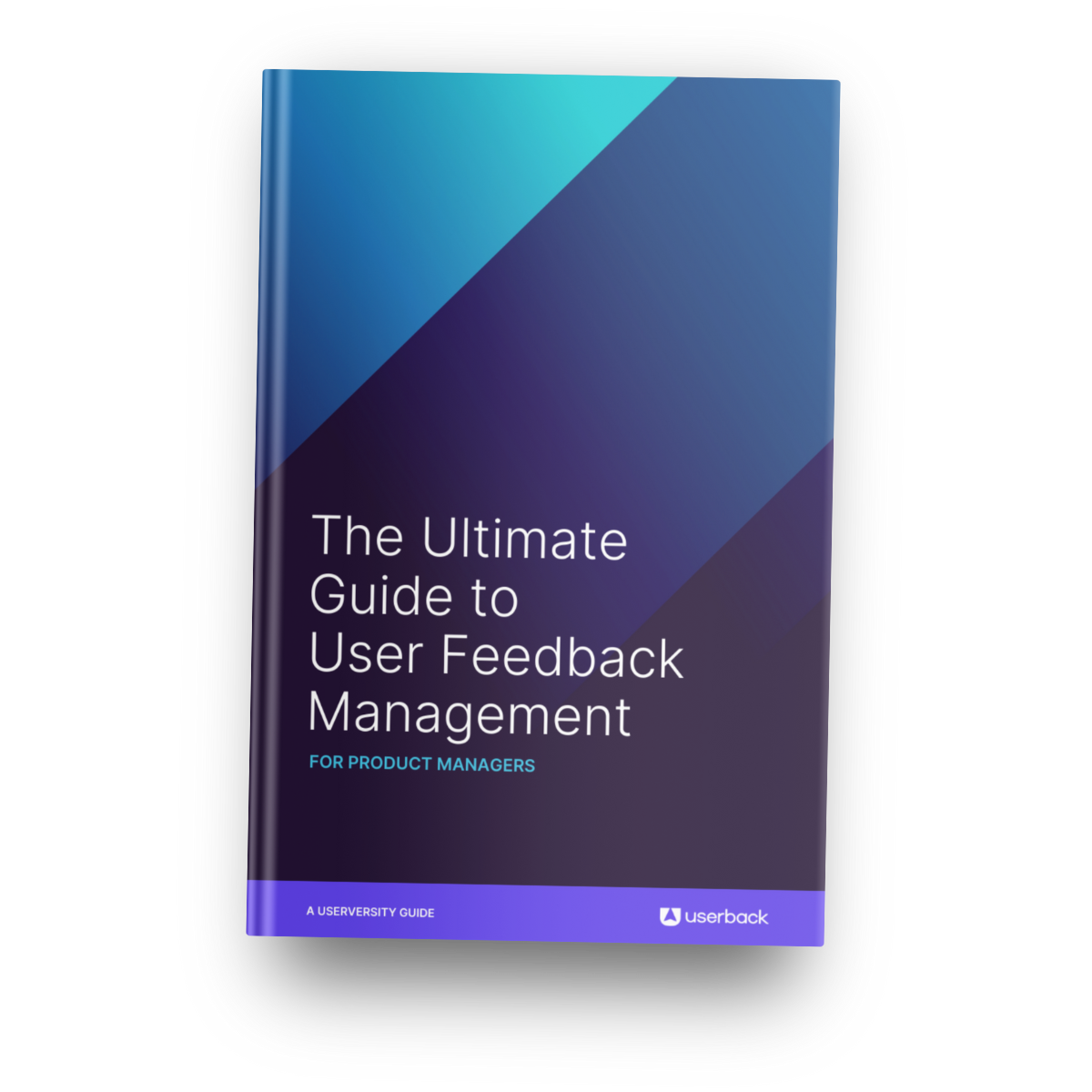“Product-market fit means being in a good market with a product that can satisfy that market.”
Marc Andreessen | Startup Coach & Investor
As a product manager or founder, you probably already know that user feedback is essential for making your product a success. But do you ever think about the role it has to play in your being more competitive and being able to nail the holy grail of startups — Product-Market Fit?
By incorporating user feedback effectively, you can create a product that not only satisfies your customers’ needs but also leapfrogs your competitors.
In this blog post, we’ll dive into why user feedback is so important and how it can help you fine-tune your product market fit strategy. We’ll cover the different kinds of feedback you can collect, how to analyze it like a pro, and most importantly, how to prioritize the changes you make based on that feedback. If you’re serious about product success, you won’t want to miss this one!
By the end of this post, you’ll have a better understanding of how to turn user feedback into a competitive advantage and create a product that truly resonates with your target audience.
So, whether you’re just starting out or looking to improve your existing product, read on to learn how to leverage the power of user feedback for a successful product market fit.
What is Product-market Fit (PMF)?

Simply put, Product Market Fit is how well your product connects with and satisfies a specific group of people… your users.
The term was made popular by the one and only Marc Andreessen, a Silicon Valley legend, who defined it as having a “good market with a product that can satisfy that market.”
At Userback we’ve added our own spin on Product-Market Fit:
Product-Market Fit is when you create a product that people can’t live without and that they happily pay for, without any hesitation!
Understanding Product Market Fit means understanding who your product is for and making sure it’s valuable to them. Think of it like a puzzle – you need to find the right pieces that fit together perfectly to create a beautiful and complete picture. Sure, it might take some trial and error, but once you find the right combination, everything falls into place. It’s well worth the effort because when it “clicks” it’s magic!
Three questions to clarify Product-Market Fit
When building your product, you can ask three questions to get clarity on whether you will have product-market fit:
- Who will benefit from your product and do they need it?
- Will your users be able to live without your product and will they come back?
- Have you filled a gap in the market and established a competitive niche?
Why is Product-Market Fit important?
If you’re starting a new business, launching a new product, or adding new features to your existing lineup, you have to make sure you’ve got your product market fit figured out. Or, to put it another way, your product needs to be in sync with what your target market wants and needs. Without that alignment, you’re going to have a tough time gaining traction, growing and ultimately succeeding.
So, how do you know if you’ve got product market fit?
Simple:
- Your product has to solve a problem or fulfill a need that people actually have.
- They’ve got to be willing to pay for it.
And in our experience it’s a lot easier to sell something to people if they already want it than it is to try to convince them they need it!

Realizing product market fit requires a deep understanding of your target market.
You need to know users’ pain points, and what solutions they’re looking for or need without knowing they need them… yet. This means conducting market research, engaging with potential users, and iterating the product until it aligns with their needs.
One of the main reasons it’s essential is because product-market fit can help startups grow faster and avoid failure. When a product fits its target market, it naturally appeals to customers, leading to faster organic adoption and revenue growth. This makes the business profitable quicker and reduces risk of failure.
Product market fit is what keeps a company going. It’s the fuel that powers it forward. In the IT industry, a good example of product market fit is the success of Apple’s iPhone. Not only was the product innovative and well-designed, it also satisfied a need in consumers’ lives — a need that many didn’t realise they had! — leading to its widespread adoption and success.
If you want your product to succeed, you need to make sure your customers see its value and enjoy using it. That’s where product-market fit comes in. It helps you figure out exactly what your product needs to have in order to be indispensable to your customers.
You can’t just be another product that people can take or leave. You have to be something they can’t live without.
Launching a product or feature without proper market fit can lead to high churn rates, low adoption, and a longer time to become profitable. This can drain resources and lead to failure or pivoting the business in a different direction.
On the other hand, achieving product-market fit has all sorts of benefits. You’ll see increased revenue, better chances of success, lower costs, and happier employees. It’s a win-win situation, really.
Key Components of Product-Market Fit
To achieve product market fit, it’s crucial to go through four distinct stages:
- Ideation
- Validation
- Scale
- Product Market Fit
1. Ideation
This is when you put on your thinking cap and devise potential solutions to a problem or need within the market.
2. Validation
Next you test and refine your ideas to see if they have any merit – this step is crucial as it allows you to garner feedback from your audience. To do this, you might conduct market research, speak to potential customers, or create a prototype to get feedback.
3. Scale
Once you’ve validated your idea, it’s time to start scaling and growing your product and your customer base. You’ll need to create a marketing strategy, build a team, and expand your reach. The goal here is to gain traction and build momentum.
4. Product-Market Fit
Finally, you’ll reach the elusive product-market fit stage. This is where your product meets the needs of your target audience and is ready for launch. However, it’s important to remember that customer needs will change over time, so it’s essential to remain vigilant and adapt to changing customer preferences.
By following these four stages, you’ll be well on your way to achieving product market fit and creating a successful business.
But it doesn’t just stop there!
Product market fit is not an end point it is a constant and continuous process — a philosophy and an attitude to be embedded throughout your organization.
The role of user feedback in Product-Market Fit
User feedback provides the insights into what customers want, need, and value, allowing organizations to tailor their products and services to better meet those needs… and optimize product-market fit. There are several ways in which user feedback can be gathered, each with its own benefits and drawbacks. You can read more in our previous articles and ebooks, including:
- The 3 basic types of user feedback: which is right for you?
- Power up your feedback loop! 15 ways to collect actionable insights from your users.
- The Ultimate Guide to user Feedback Management for Product Managers
Examples of user feedback include:
- Surveys and interviews
Offer valuable insights into customers’ pain points and areas where a product can be improved.
- Reviews
Can provide feedback on specific features and functionalities of a product, helping companies make adjustments to meet customer needs.
- User Acceptance Testing (or UAT or UAT testing)
Can provide real-world feedback on how customers interact with a product, allowing companies to identify usability issues and make necessary improvements.
When analyzing this feedback, it’s important to look for patterns and common themes to gain a comprehensive understanding of user needs and expectations. This could involve improving upon existing features, adding new features, or creating a completely new product that addresses a gap in the market.
Gathering user feedback should be an ongoing process, allowing your organization to continually stay relevant in a constantly evolving market by improving its product to ensure optimal Product-market Fit. In addition to maximizing customer retention and acquisition, this helps to build trust and reputation.
6 Ways to turn user feedback into Product-Market Fit and competitive advantage
In the world of product development, it’s important to stay attuned to user feedback. But it’s not enough to just listen – you need to analyze and act on that feedback to improve the user experience. Here are six ways you can turn that user feedback into competitive advantage by optimizing Product-Market Fit:
1. Identify and assess common pain points:
Take a deep dive into user feedback to identify the common issues that are causing frustration or confusion. By prioritizing these issues, you can make changes that will have the biggest impact on user satisfaction. For instance, if users are struggling to navigate your website or app, it’s worth investing in improving the user interface.

2. Enhance usability:
A great product is one that is easy to use and intuitive. By gathering feedback from users, you can identify areas where the user experience can be improved. Whether it’s simplifying complex features or providing clearer instructions on how to use the product, making user feedback informed improvements is a key way to ensure your product is being used as intended.

3. Add new features:
By listening to users, you can identify new features or functionality that will set your product apart from competitors and attract new users.
For instance, if users are clamoring for a mobile app for a website, you should prioritize building a mobile app to meet their needs. This will show users that the company is responsive to their needs and willing to invest in their satisfaction.

4. Optimize pricing:
Another area where user feedback can be incredibly valuable is in pricing strategy.
You can use feedback to inform pricing decisions, adjusting prices or bundling features differently based on user preferences.
For example, if users are unwilling to pay for certain features, you could consider offering those features at a lower price point or bundling them with other features.
5. Building customer loyalty:
Long-term loyalty is crucial for any business, and user feedback can play a vital role in achieving this goal.
By addressing user concerns and providing excellent customer support, companies can build a loyal base of users who will recommend the product to others.
One way to build customer loyalty is by providing guided prompts in support chats and relevant information to help users resolve technical issues on their own.
This will build trust with users, reduce the number of incoming support requests, and ultimately lead to greater user and customer satisfaction.
6. Prioritize features, fixes and functionality:
Product development is an ongoing process that requires constant adaptation. User feedback is a key tool that companies can use to ensure that their product continues to meet the changing needs of their users. By focusing on the features or improvements that will have the greatest impact on user satisfaction and retention, companies can prioritize the activities on their product roadmap that will deliver real value to those who need it.
For instance, if multiple users are requesting a specific feature, the company should prioritize developing that feature to enhance the user experience. This will show users that the company is listening to their needs and is committed to making improvements that will benefit them.
By prioritizing development based on user feedback, companies can ensure that their product remains relevant and useful to their target audience. This will help to build a loyal user base and attract new users to the product over time. Ultimately, this will lead to a more successful product and a more satisfied user base.
How Userback can help
User feedback is the lifeblood of any successful software product. And if you’re looking to nail product-market fit, Userback is the perfect tool for collecting and managing user feedback so you can stay ahead of the game.
With its powerful feedback and collaboration features, Userback gives businesses the ability to continuously and cost-effectively gather valuable insights from their users and make informed decisions to improve their products and maximize product-market fit:
Real time feedback:
Userback allows you to collect feedback — like bug reports, feature requests and general comments — directly from your users in real-time, so you can quickly identify pain points and areas for improvement.
All the details you need:
Every piece of feedback comes with the relevant user and session information so you know exactly what the operating environment that they are using. When you run Session Replays the user doesn’t even have to tell you what was going on… you can see a video-like recording of the user session detailing every interaction leading up to a specific event or issue. This information saves developers significant time when investigating and replicating issues.
Collaboration:
From on-screen annotation to assigning tasks, Userback features a range of collaboration tools that enable users and software teams to communicate better and ultimately work together to improve your product.
Integration:
Userback easily integrates with popular project management and collaboration tools, such as Trello, Slack, and Jira, making it easy to incorporate feedback into the product development process.
Feedback portal:
A unique feature of Userback is its Feedback Portal, which allows teams to collect and organize feature requests while letting users vote and comment on what matters most to them.
Conclusion
Streamlining the user feedback experience can be a breeze if you follow a few simple steps. Providing clear instructions, collaborating with end-users, involving stakeholders early and often, automating testing processes, and providing clear feedback mechanisms can make all the difference. With these in place, you’ll be well on your way to creating a seamless and enjoyable user experience. Automation tools, such as Userback, can improve the overall quality of a product by identifying defects that may have been missed during manual testing, streamlining workflows, and saving time.
Userback is an easy-to-use tool that integrates with various project management tools, allowing for automation of various tasks. Getting started with Userback is simple and can significantly improve the efficiency, quality, and user satisfaction of the testing process.
About Userback
Founded in Australia in 2016, Userback is a market-leading user feedback platform helping 20,000+ software teams to understand what customers need so they can build better web applications, faster.
Userback streamlines and automates the realtime in-app collection, evaluation and management of visual feedback and contextual surveys. Userback can be used standalone or seamlessly integrated into existing business workflows to allow product managers and developers to validate ideas, optimize product-market fit, refine roadmaps, prioritize features, fix bugs and deliver value with greater insight, impact and efficiency.
Start free at userback.io/signup
Power up your feedback loop with The Ultimate Guide to User Feedback for Product Managers
If you enjoyed this article, you might want to download The Ultimate Guide to User Feedback Management. From collection to closure, this comprehensive eBook highlights what you can be doing to streamline your user feedback processes and better understand what your users need in order to deliver the features they want, faster!

